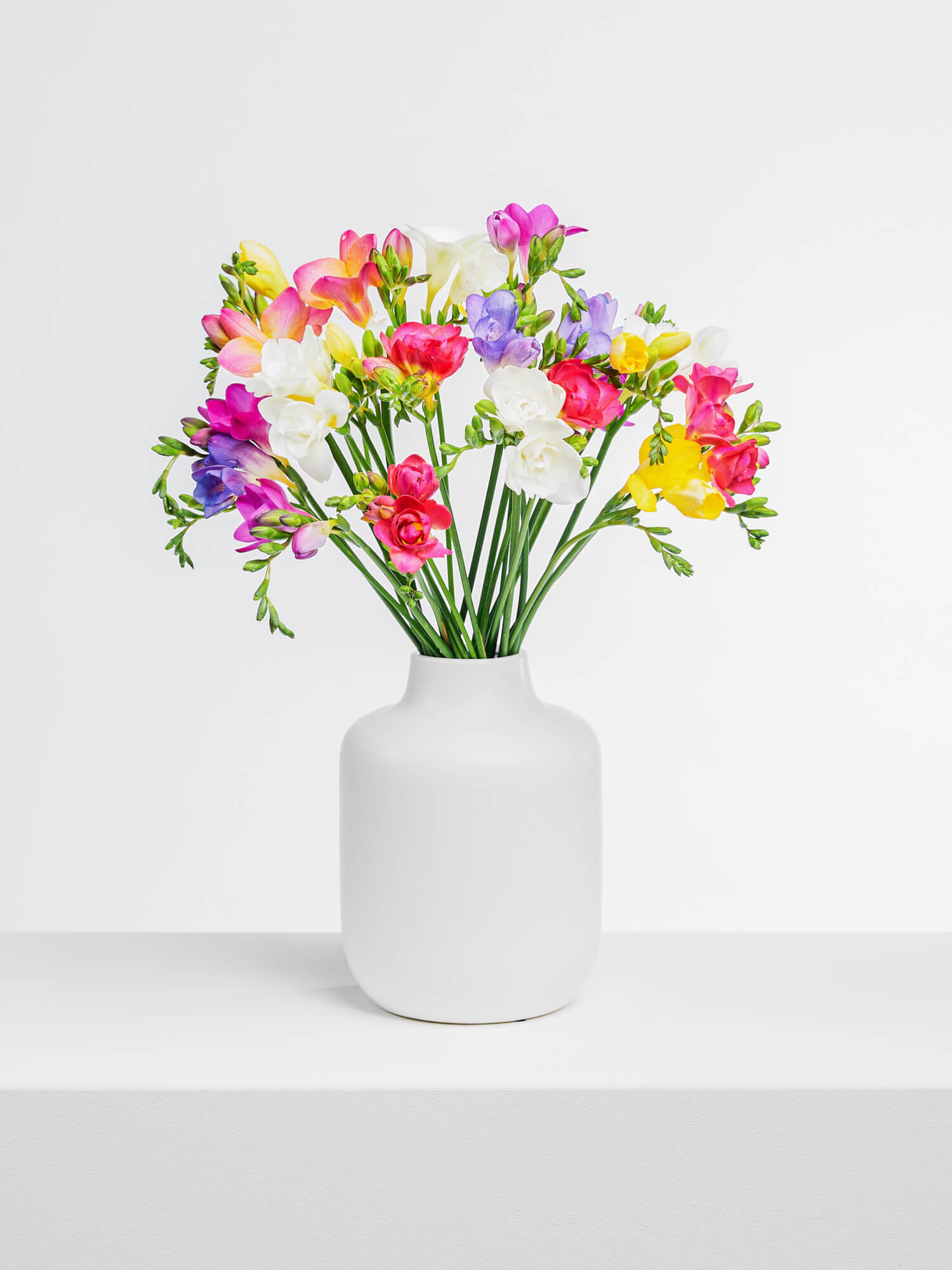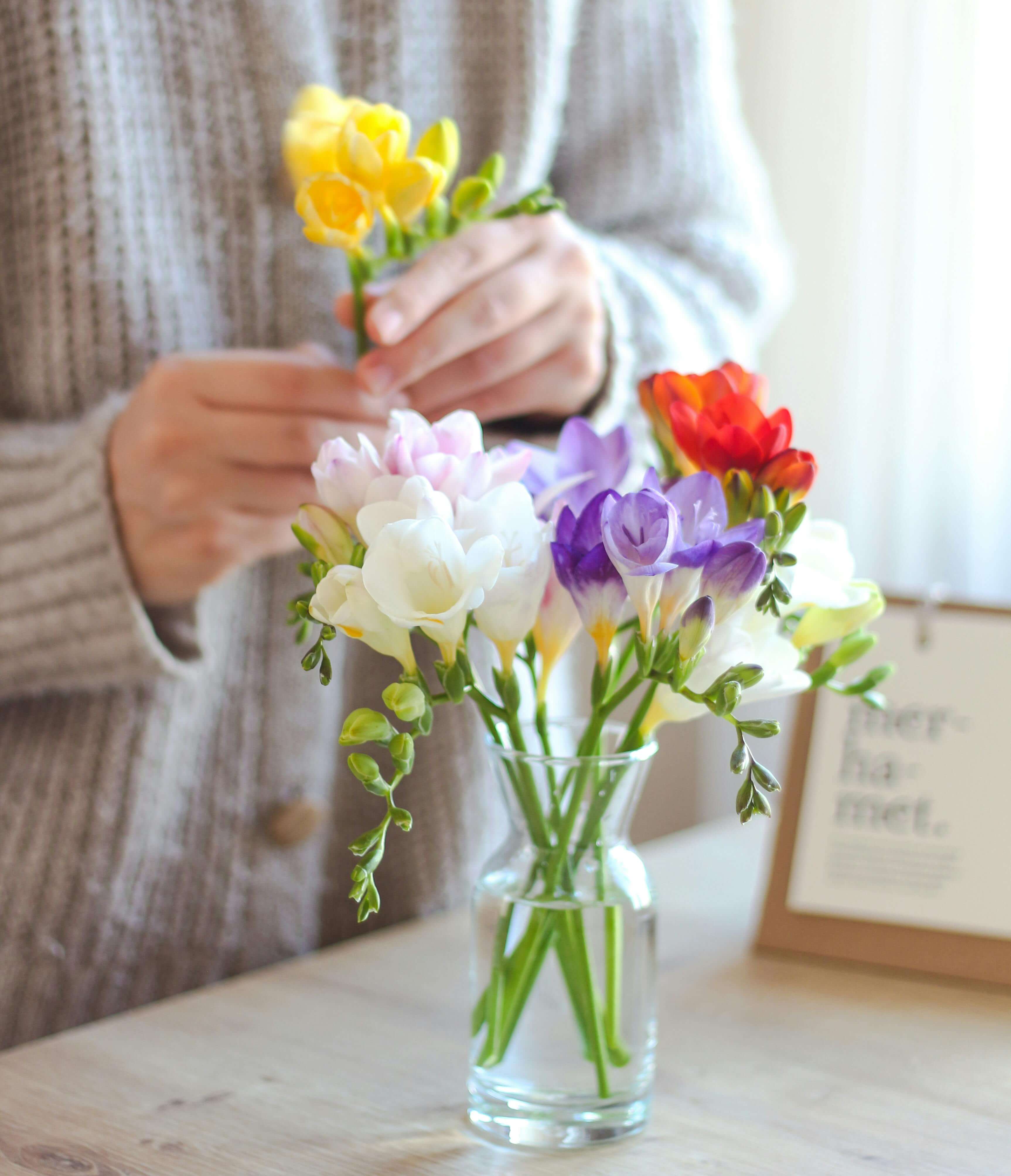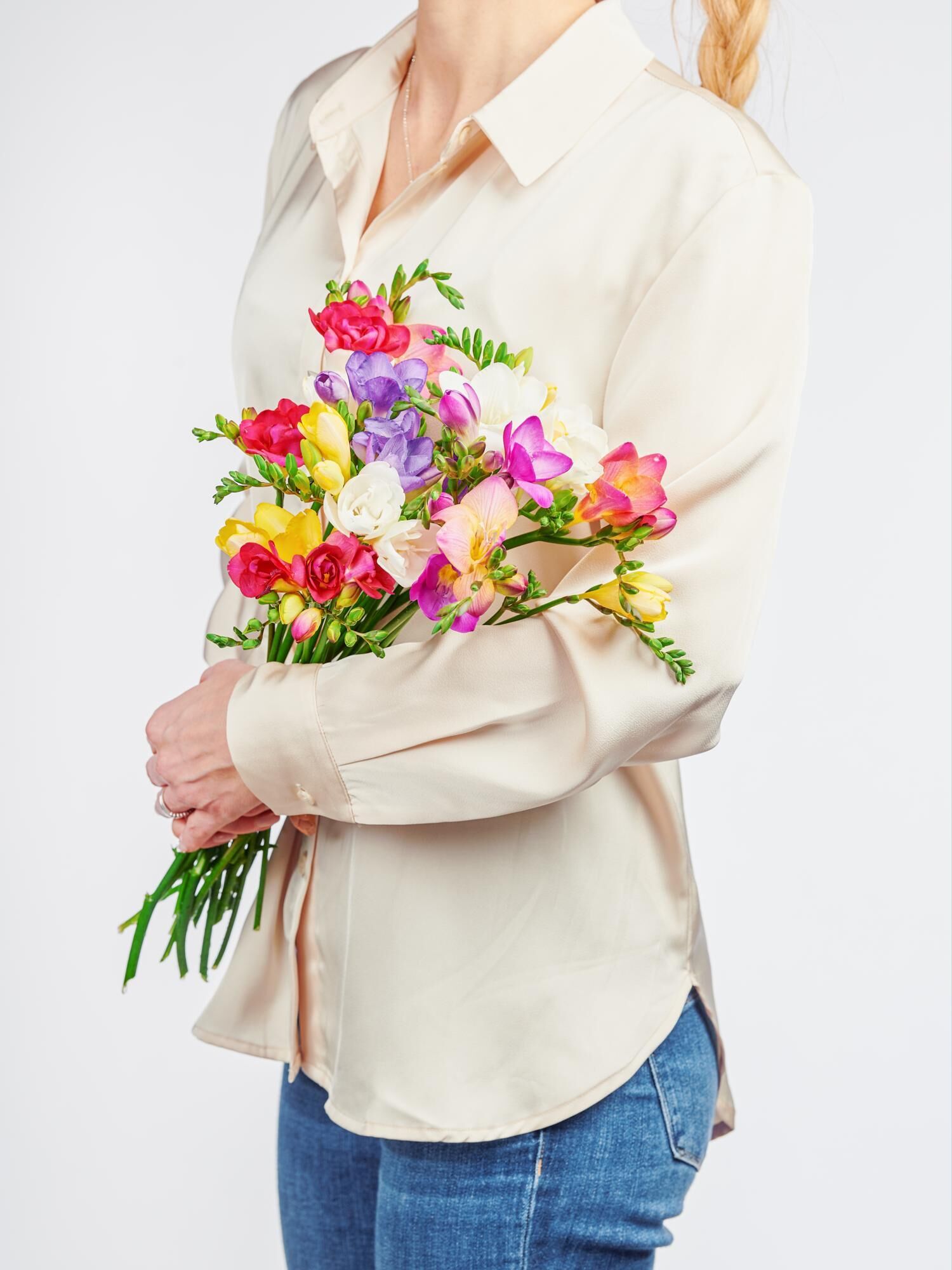Freesias - fragrant heralds of spring with a special elegance

Freesias are truly fragrant wonders and fascinate with their graceful blooms and vibrant variety of colours. Originally from South Africa, they have established themselves worldwide as popular cut and garden flowers. Their delicate, almost soapy fragrance and symbolic meaning make them a wonderful choice for bouquets, gifts or decorative arrangements.
Freesias - origin and special features
Freesia belongs to the iris family (Iridaceae) and originally comes from the coastal regions of South Africa. Its botanical name honours the German doctor and botanist Friedrich Heinrich Theodor Freese.
The funnel-shaped flowers, which grow on elegantly curved stems, are particularly characteristic. They are not only a visual highlight, but also delight with their intense, fresh fragrance, which is often described as a mixture of jasmine, lemon and rose.
Freesia flowering time
When do freesias bloom?
Freesias flower naturally in the spring and summer months, depending on when they are planted.
- Outdoor freesias: These are planted in spring and flower from July to September.
- Greenhouse freesias: They are available almost all year round and are a popular cut flower, especially in the winter months.
Thanks to special cultivation methods, freesias are available as cut flowers all year round, so they can be enjoyed at any time of year.
When are freesias in season?
Freesias are mainly available in spring, but thanks to worldwide cultivation, they are available as cut flowers all year round. They are particularly popular during the wedding season from March to May.
How long do freesias bloom?
Freesias flower for different lengths of time depending on the location and planting time. Outdoors, they usually flower for four to six weeks between July and September. Under optimal conditions in the greenhouse or as a houseplant, they can develop over a longer period. Cut flowers will keep for around 7 to 10 days in a vase if they are regularly cut and supplied with fresh water.
Planting freesias - ideal locations outdoors and indoors
Freesias indoors as a houseplant or cut flower
Freesias are not only a beautiful garden and balcony plant, but also perfect for indoors - either as a potted plant or as a fragrant cut flower in a vase.
Freesias as cut flowers
How do freesias stay fresh in the home?
Freesias are popular cut flowers and are valued for their beguiling fragrance and long shelf life. To keep them fresh for as long as possible, you should follow the general care tips:
- Cut the stems: Cut the stems at an angle with a sharp knife.
- Change the water: Use fresh, lukewarm water every two days.
- Flower freshener: A special nutrient additive can extend the shelf life.
- Location: Place the vase in a cool, bright place out of direct sunlight or draughts.
- Do not place too deep in water: Freesias prefer little water in the vase so that their stems do not rot.
Which flowers go well with freesias?
Thanks to their delicate appearance, freesias combine wonderfully with other flowers. They look particularly harmonious in bouquets with:
- Roses - for romantic bouquets
- Tulips - for spring-like lightness
- Lilies - for an elegant overall look
- Eucalyptus - for a modern, natural touch
Freesias are true all-rounders: they enchant with their unique fragrance, bring colour to everyday life and have a wonderful symbolic meaning. Whether as a single flower or in a bouquet - they are always a stylish choice!















